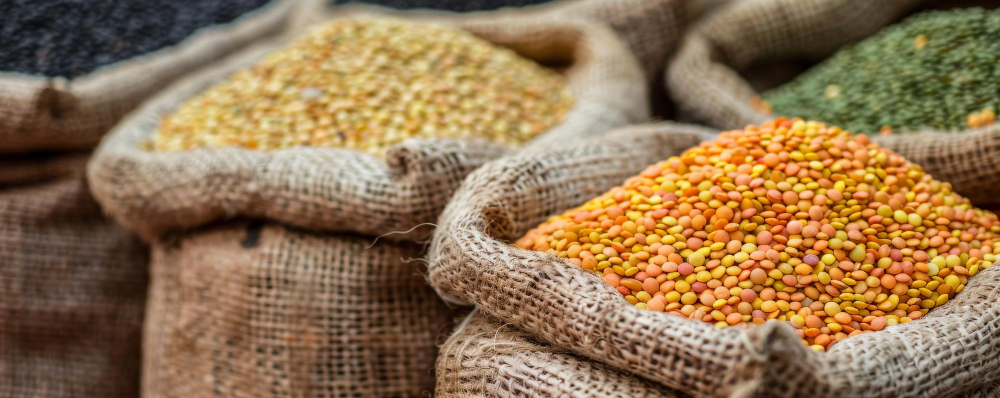Summary
Global green lentil prices are experiencing significant downward pressure as bumper harvests from the US, Canada, and Australia flood the market. Indian importers are now pushing to renegotiate forward contracts, with prices dropping from $850 per tonne last year to $560 currently. Meanwhile, concerns over India's pigeon pea crop are driving those prices higher, creating a complex dynamic in the global commodity landscape.
Green Lentils Market Faces Supply Surge
The global market is witnessing a dramatic shift as abundant supplies from major producers put downward pressure on prices, prompting buyers to seek better terms on existing contracts.
Record Harvests Drive Supply Dynamics
This year's production figures paint a picture of plenty. Canada is on track to harvest over 2.60 million tonnes of lentils—surpassing both last year's output and the five-year average. The increase stems from expanded acreage and improved yields across Canadian growing regions.
The US isn't far behind, expecting to bring in over 500,000 tonnes of lentils—a 22% jump from the previous year. American chickpea production is also climbing, estimated at more than 300,000 tonnes.
Adding to the supply abundance, Australia anticipates harvesting 1.71 million tonnes of lentils alongside 220,000 tonnes of peas. These combined figures ensure ample availability throughout the 2025-26 season.
Forward Contracts Face Dramatic Price Adjustments
Contracts for the commodity have seen unprecedented price shifts. Agreements from the US, which commanded $850 per tonne last year, are now being negotiated at just $560—a drop of over 30%. This decline reflects the market's adjustment to increased supply and is further compounded by lower pigeon pea prices pulling rates down.
India Renegotiates as Trade Flows Shift
The pricing pressure has reshaped buying patterns significantly. Importers are actively seeking to renegotiate existing agreements in light of current market conditions. US exports have slowed as buyers push back on contract terms. In contrast, Canada has ramped up shipments through Vancouver port, while Russia has entered the fray with competitive offerings.
This week's market movements highlight the volatility: Russia cut its prices by $5, bringing them to $630 per tonne for October-November delivery. Canada moved in the opposite direction, raising offers by $5 to $640 per tonne for the same period.
Pigeon Peas Buck Downward Trend
While lentil and yellow pea prices slide, pigeon peas are moving higher. Prices jumped $10-40 per tonne this week amid growing concerns about domestic crop conditions. Excess rainfall in key growing states—Maharashtra, Madhya Pradesh, and Karnataka—has raised fears about both yield and quality. The heavy rains that have battered these regions over the past six weeks threaten to constrain supply.
Origin Countries Respond to Supply Concerns
Producer nations responded swiftly to supply worries: Mozambique increased offers by $15 to $545 per tonne, Myanmar made the sharpest move with a $40 increase to $690, while Tanzania and Malawi raised prices by $20 and $10 to $530 and $510 per tonne respectively. All quotes apply to October-November shipments.
Policy Uncertainty Creates Market Volatility
Yellow Peas Face Additional Pressure
The yellow pea market continues its downward trajectory. Russia, Ukraine, and Canada each trimmed prices by $5 per tonne this week. Canada now offers yellow peas to China at $300 per tonne, while Russia undercut that at $295.
For the subcontinent market, Canada quotes $340 per tonne, with Russia and Ukraine offering at $330. The declining prices, combined with approaching kharif harvest, have sparked calls to end zero-duty yellow pea shipments.
Policy Decisions Pending
The issue has reached the inter-ministerial committee for discussion—though no decision has emerged yet. A farmers' association has escalated the matter to Delhi High Court, challenging the zero-duty policy.
Any government action or court ruling could significantly impact agreements and broader market dynamics. Buyers might slash prices to offset potential duties, fundamentally altering trade flows. However, if authorities establish a minimum price floor, the market could stabilize at different levels entirely.
Conclusion
The lentil market is experiencing significant flux driven by record production and weather concerns. North American and Australian harvests have created favorable buying conditions, while rainfall issues are tightening pigeon pea availability. For procurement professionals managing supply agreements, this environment presents both opportunities and challenges—lower prices offer cost advantages, but navigating renegotiations and policy uncertainty requires careful strategy. As harvest season progresses and regulatory decisions take shape, traders should stay alert to rapid shifts that could redefine market conditions.
